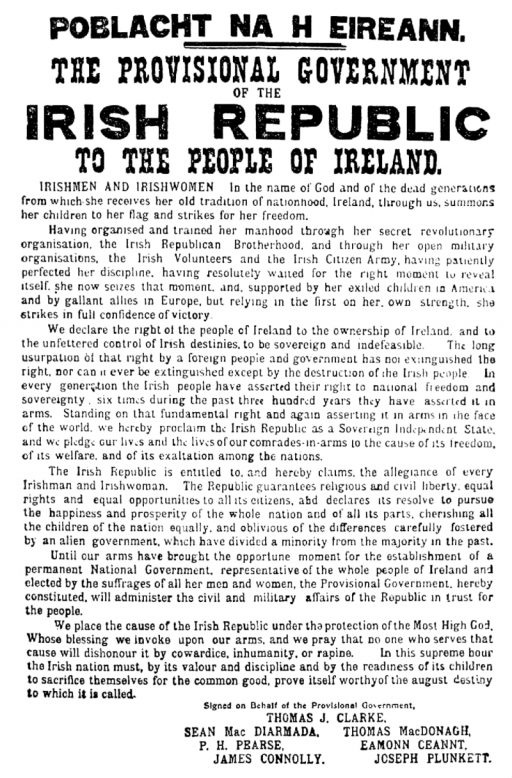Republican groups launched a revolt against British rule in Ireland on Easter Monday 1916 (April 24th), seizing a number of key buildings in the capital, Dublin.
The proclamation of an independent republic was read on the steps of the General Post Office, used by the rebels as their headquarters.
Street battles were fought with British troops in the following days of Easter Week.
Britain sent thousands of extra soldiers to Dublin to crush the rebellion.
Parts of the city centre were badly damaged by artillery fire.
Heavily outnumbered, the rebel leaders surrendered on April 29th.
Around 450 people were killed in the violence, many of them civilians.
The British authorities made more than 3,000 arrests following the surrender.
Ninety people were condemned to death – 15 were executed, among them the signatories of the proclamation of the republic.
Ireland’s principal state commemorations of the centenary took place over the 2016 Easter weekend in March. The full text of a speech by President Michael D. Higgins can be found here.
The Easter Rising took place while Britain was under intense pressure during the First World War.
Little more than two months later, the Battle of the Somme began. Soldiers from both traditions in Ireland played significant roles in the British offensive.
The fight for Irish independence started in earnest after the war.
Source: Wikipedia/various
Images: Wikipedia Commons/Public Domain
Posted by: CN Editorial Team
